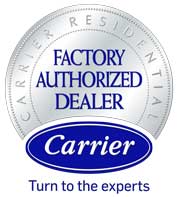Paying close attention to your HVAC is essential to keep your home or business comfortable year-round. This includes the condensate drain, one of your unit’s most crucial components. We explain what it is, how it works, the signs and causes of a clogged condensate drain line, and how to find an air conditioning maintenance contractor for the job.

How the Condensate Drain Line Works
The condensate drain line expels excess moisture from your HVAC system that occurs during the cooling process. It is made of plastic PVC pipe with a slant to help gravity move the water through it until it is flushed outside using an electric pump.
Signs and Causes of a Clogged Drain Line
Clogged condensate drain lines can lead to strange odors, water leakage, indoor humidity, water pooling around the unit, and frequent emergency calls for air conditioning repair. Clogs can be caused by rust buildup, algae growth, dirt accumulation, and insects.
Steps to Unclog a Condensate Drain Line
Step 1: Check the Air Filter
Remove the air filter from your HVAC system to see if it is caked with too much dust and dirt. Be sure to clean or replace it promptly. Doing so will help ensure the proper function of the unit. More importantly, a clean air filter helps minimize clogs in the condensate drain line.
Step 2: Clean the Condensate Drain Line
If you can’t access any part of the line, turn off the power before you clean it with an appropriate cleanser tool or vacuum cleaner.
Step 3: Check the Condensate Pump
How strong is your condensate pump? Ensure it’s working properly and double-check the electric wires if they are connected correctly to avoid short-circuiting any AC unit parts.
Step 4: Check the Condensate Trap
The condensate trap consists of components near where heated indoor air meets the cooler outdoor temperatures, which can create a situation in which trapped sediment blocks drainage lines. Make sure debris or insects don’t compromise this part of the HVAC system.
Step 5: Check the Condensate Line
Check your building’s outside wall casements at least once every six months for clogs from external sources such as leaves, garden trimmings, and vegetation spots. Use a flashlight to look for telltale signs such as standing puddles and moldy exteriors.
Count on Superior Air!
Prevention remains the best solution for dealing with condensate drain clogs. Through regular maintenance, you can be sure your HVAC system runs efficiently and minimize clogs in this part of the equipment. Schedule one with the professionals at Superior Air! Our technicians provide excellent HVAC services, from air conditioning installation to maintenance. Call us at (559) 734-2002 today to get started. You can also reach us online for a free consultation. We serve homeowners and businesses in Tulare, CA.



